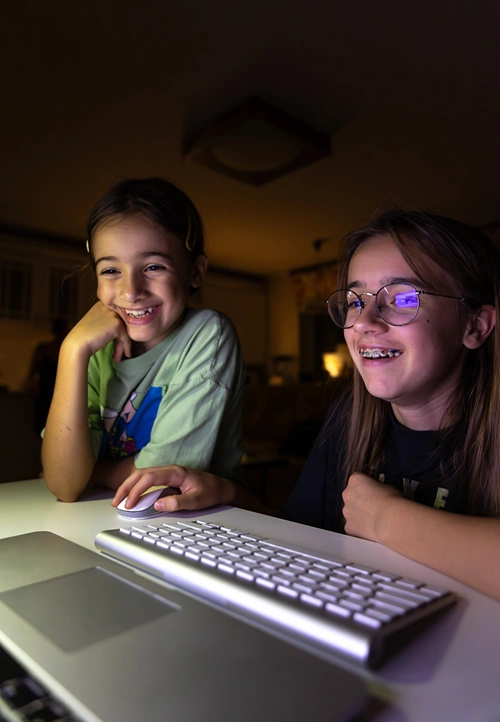Teaching Kids to Detect AI Use, Scams, and Online Misinformation in 2025
The idea of teaching kids how to think critically is not new. But when it comes to new developments in technology related to internet safety, children and teens must also be made of aware of new dangers that can catch us all off guard, not matter our age or expertise.
Parents and educators can help kids put their best foot forward in this new year by focusing on one thing within the broader scope of developing critical thinking minds.
What is Real?
Thanks for comment sections, social media posts, AI generated images and videos, we all need to ask one question when we see, read, or listen to anything online. It’s the one thing we need to tech our kids before we dig deeper into other levels of decrement.
“Is this real?”
- Is the image real or is it AI generated or doctored in some way?
- Is it a totally fabrication passed off as reality?
- Is a convincing video using deep fake technology?
- Is the song I am listening to produced by humans?
Most of these issues have been around for a while and there is hope that people are being more internet savvy when it comes to detecting AI content. However, the volume of instances are increasing because now the average person with minimal skills can use AI to generate internet content can will fool the best of us, if we are not paying attention.
A New Level of Misinformation
Social Media gave a voice to the common person many years ago, but today those with anterior motives can use AI to create and spread misinformation more rapidly. Images and videos can also make it more enticing and believable.
Even harmless things like the use of an AI voice that sounds like a real human can make it easier for content creators to produce and post audio and video a virtually no cost. As technology becomes more sophisticated, our instruction on how to navigate the internet safely must evolve.
Here are a few critical things we should teach kids to help them properly distinguish truth from fiction:
Question Everything You See Online
Teach kids to develop a healthy skepticism about the content they encounter. Encourage them to ask:
- Who created this content, and why?
- Is there a credible source backing this claim?
- Does it align with what I already know, or does it seem exaggerated or outlandish?
Look for Red Flags
Show kids how to spot signs of AI-generated or manipulated content:
- Images and videos: Look for distortions, unnatural movements, or inconsistencies (like mismatched reflections, odd lighting, or unrealistic backgrounds).
- Text: Be wary of repetitive or overly generic language that lacks depth, which may signal it was AI-written.
Verify Sources
Teach kids to cross-check information using multiple credible sources. For example:
- Reverse image search to find the origin of an image.
- Compare the claims in a post or video with trusted news outlets.
Understand the Motivations Behind Content
Help kids recognize that some creators may have ulterior motives, such as spreading misinformation for financial, political, or social gain. Explain how AI can amplify these efforts by making fake content appear more convincing.
Recognize and Avoid Online Scams
Scammers are increasingly using AI to create convincing emails, messages, or websites designed to trick people into sharing personal information or money.
Teach kids:
- Never to click on suspicious links or download attachments from unknown sources.
- To verify any requests for sensitive information, especially those that appear urgent or alarming.
- To be cautious of offers that seem too good to be true, such as free giveaways or prizes.
- To consult a trusted adult if they’re unsure about a message or offer.
- Teach our three part scam series which covers current and evolving scams.
Be Mindful of Emotional Triggers
Teach kids that many forms of misinformation are designed to provoke strong emotions, such as anger, fear, or excitement. If something feels too shocking or too good to be true, it might be worth a second look.
Stay Informed About AI Technology
Help kids understand how AI works, it’s limitations, and ricks associated with its use. Knowing that AI can create convincing content helps demystify its capabilities and encourages a more critical approach to online material.
Encouraging Responsible Digital Citizenship
Equipping kids with these skills isn’t just about protecting them from misinformation; it’s about empowering them to participate responsibly in the digital world. By fostering critical thinking, curiosity, and a proactive approach to verifying information, we can help the next generation navigate the online landscape with confidence.
Read more about the understanding the risk of AI generated content.




